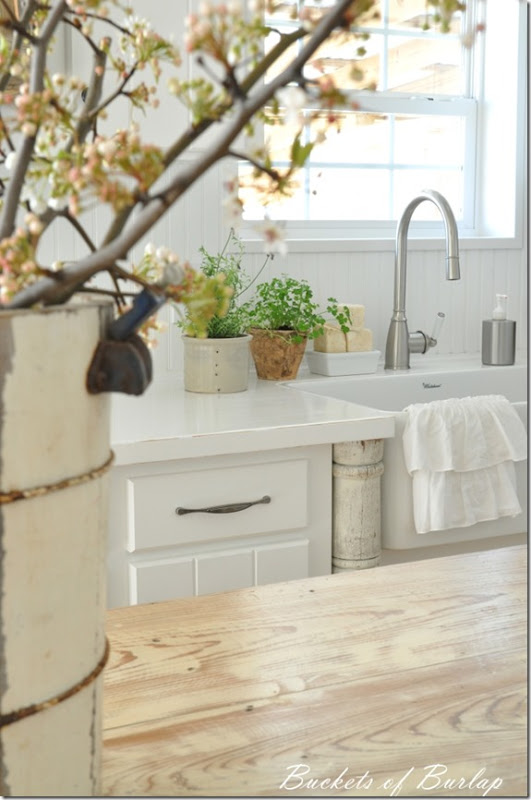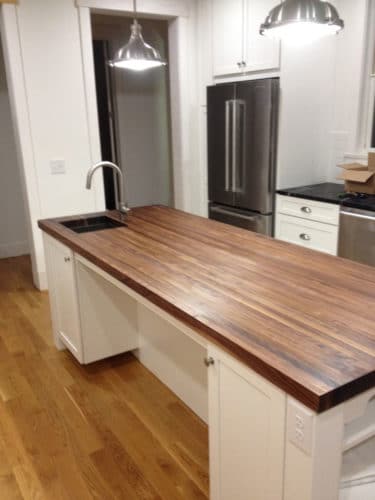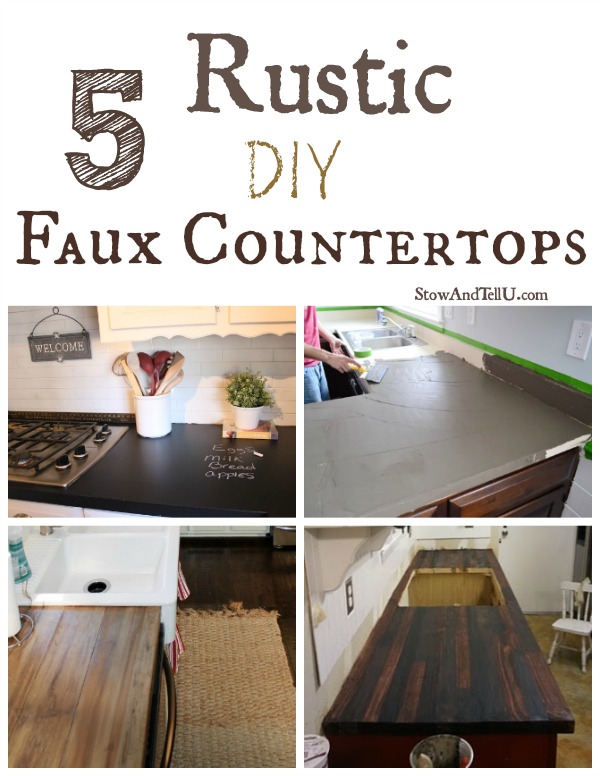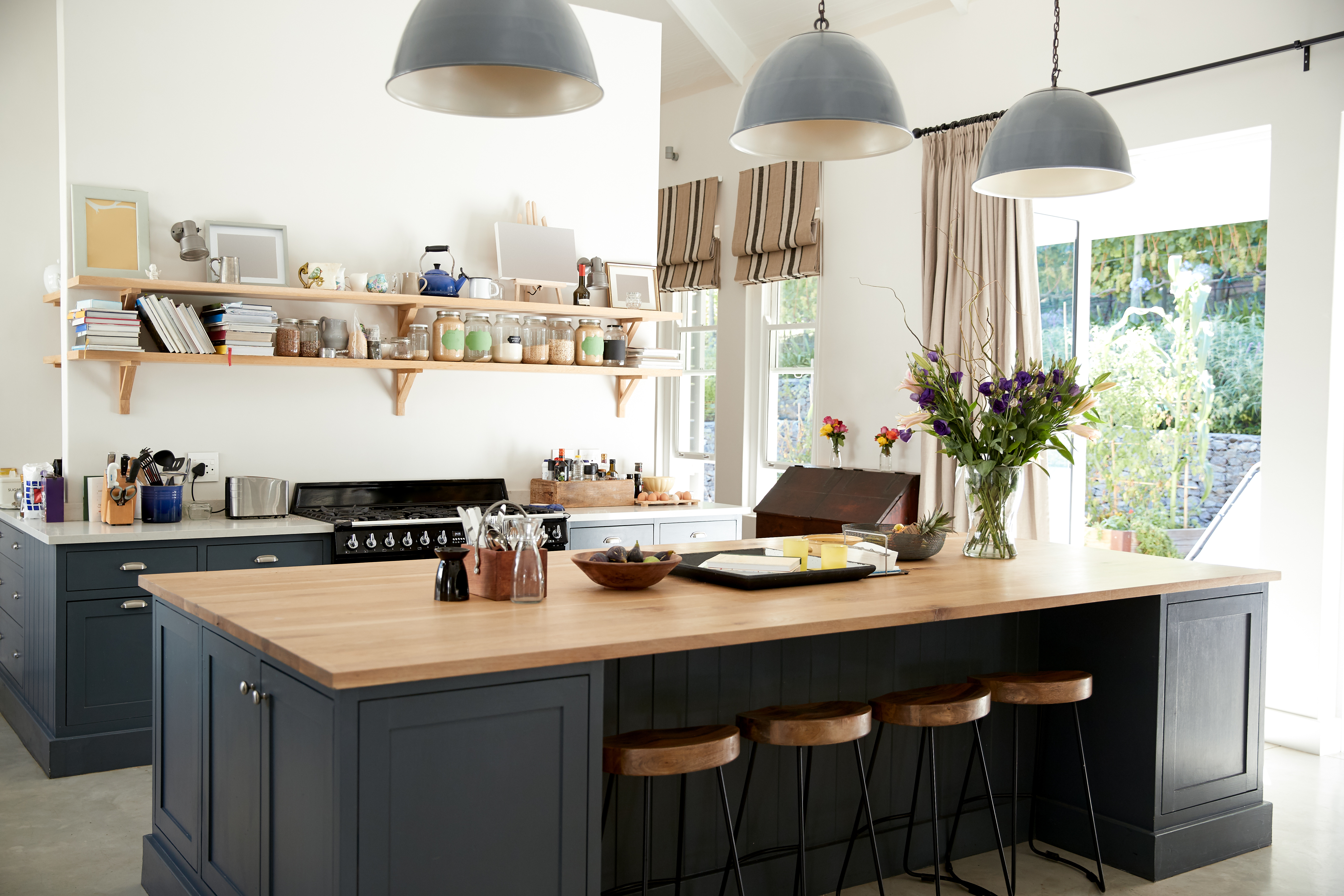Painting butcher block countertops can be an appealing option for homeowners looking to refresh their kitchen’s appearance without a full renovation. Butcher block is a popular choice for countertops due to its natural warmth and aesthetic appeal. However, over time, the surface may become stained, worn, or simply no longer match the updated décor of a kitchen. Painting offers an affordable and versatile solution to revitalize butcher block countertops. By choosing the right paint and proper application techniques, homeowners can transform their countertops into a centerpiece that reflects their style while maintaining functionality.
Before embarking on a painting project, it’s crucial to thoroughly prepare the butcher block surface. Preparation is key to ensuring that the paint adheres properly and lasts for a long time. The first step involves cleaning the countertop to remove any dirt, grease, or residue. Using a mild detergent and water is usually sufficient, followed by rinsing and drying the surface completely. After cleaning, sanding the butcher block is necessary to create a smooth surface for painting. Sanding helps to remove any existing finish and opens up the wood pores, allowing the paint to adhere better. Starting with coarse sandpaper and gradually moving to finer grits provides the best results.
Once the surface is sanded, it’s essential to remove all dust particles by wiping down the countertop with a damp cloth or tack cloth. This step ensures a clean surface for priming. Applying a primer is a critical step in painting butcher block countertops, as it provides a base for the paint to adhere to and helps prevent the natural oils in the wood from bleeding through the paint. A high-quality, oil-based primer or shellac-based primer is recommended for this type of project, as they offer better adhesion and durability on wood surfaces. Applying two coats of primer with light sanding in between coats can further enhance adhesion and create a smoother base.
Choosing the right paint for butcher block countertops is equally important. While latex paints are common for many household projects, they may not offer the durability needed for countertops that see daily use. Instead, opting for oil-based or acrylic enamel paints is advisable, as these types of paint are more durable and resistant to moisture, heat, and stains. High-quality kitchen and bathroom paints are often formulated to withstand the demands of these environments, making them suitable choices for painting countertops. Additionally, selecting a semi-gloss or gloss finish provides a more durable and easy-to-clean surface, which is essential for kitchen countertops.

The color choice for painted butcher block countertops can have a significant impact on the kitchen’s overall aesthetic. Light colors, such as white, cream, or pale gray, can create a clean and airy feel, making the space appear larger and brighter. Darker colors, like charcoal, navy, or black, offer a dramatic and modern look, adding depth and contrast to the kitchen. Homeowners may also consider bold colors or even a two-tone design to create a unique focal point. The color should complement the kitchen’s cabinetry, walls, and overall design theme to ensure a cohesive look.
Applying paint to the butcher block countertop requires patience and precision to achieve a smooth, professional finish. Using a high-quality paintbrush or foam roller helps to avoid brush strokes and roller marks. It’s important to apply thin, even coats of paint, allowing each coat to dry completely before applying the next. Multiple thin coats are preferable to one thick coat, as they provide better coverage and reduce the risk of drips or uneven texture. Typically, two to three coats of paint are sufficient to achieve full coverage and a durable finish.
After painting, the countertop needs to be sealed to protect the surface from daily wear and tear. A clear, water-based polyurethane sealant is a popular choice for its durability and easy application. Water-based sealants are less likely to yellow over time, making them ideal for light-colored surfaces. Applying two to three coats of sealant, with light sanding between each coat, provides a strong protective barrier. The sealant should be allowed to cure fully according to the manufacturer’s instructions before the countertop is used, which can take several days.

Maintaining painted butcher block countertops involves regular cleaning and occasional touch-ups to keep them looking their best. A mild soap and water solution is typically sufficient for daily cleaning. Abrasive cleaners or scrubbing pads should be avoided, as they can damage the painted surface and the protective sealant. Using cutting boards and trivets can prevent scratches and heat damage, further extending the life of the painted countertop. If chips or scratches do occur, they can be easily touched up with matching paint and a small brush, followed by a touch of sealant to protect the repaired area.
Painting butcher block countertops offers the flexibility to change the look of a kitchen without the high cost of replacing countertops. This project can be a weekend DIY endeavor, making it accessible for homeowners who enjoy hands-on improvements. The process allows for creativity and personalization, enabling homeowners to experiment with different colors and finishes. Painted butcher block countertops can breathe new life into an older kitchen, aligning with current design trends or personal preferences. The result is a customized space that reflects the homeowner’s taste and style.
While painted butcher block countertops can provide a fresh and updated look, it’s important to recognize that this surface may require more maintenance than natural wood or other countertop materials. Painted surfaces are more prone to chipping and wear, especially in high-traffic areas. Regular maintenance and careful use are necessary to preserve the appearance and integrity of the painted countertop. Homeowners should be prepared for periodic touch-ups and resealing to maintain the surface’s durability and aesthetics.

One of the advantages of painting butcher block countertops is the ability to conceal imperfections. Over time, butcher block can develop scratches, stains, or other blemishes that detract from its appearance. Painting offers a way to cover these imperfections, providing a fresh, uniform surface. This can be particularly beneficial in older homes where the countertops have seen years of use. By covering up flaws, painting extends the life of the countertop and delays the need for replacement.
Environmental considerations may also influence the decision to paint butcher block countertops. Using eco-friendly paints and sealants can reduce the environmental impact of the project. Low-VOC (volatile organic compounds) or zero-VOC paints are available and are less harmful to indoor air quality, making them a healthier choice for homes. These products emit fewer fumes and are safer for both the environment and the occupants of the home. Choosing sustainable, eco-friendly products aligns with a growing trend towards environmentally conscious home improvement practices.
Painting butcher block countertops can also be an opportunity to experiment with creative techniques, such as faux finishes or stenciling. These techniques can add texture and visual interest to the surface, creating a one-of-a-kind design. Faux finishes can mimic the look of stone or marble, offering an elegant alternative to solid colors. Stenciling allows for the addition of patterns or designs, which can be customized to fit the kitchen’s décor. These artistic touches make the countertop a focal point and a conversation piece.

Another benefit of painted butcher block countertops is their ability to tie together different elements of a kitchen’s design. By coordinating the color of the countertop with cabinetry, backsplash, or flooring, homeowners can create a cohesive and harmonious look. This coordination enhances the overall aesthetic of the kitchen, making it feel well-designed and thoughtfully put together. The countertop can serve as a unifying element, bringing together various colors and materials to create a balanced and appealing space.
For those who prefer a more subtle change, a translucent or wash effect can be achieved by diluting the paint with water or using a glaze. This technique allows some of the wood grain to show through, maintaining the natural character of the butcher block while still adding color. The result is a softer, more understated look that complements a variety of design styles. This approach is ideal for homeowners who want to enhance the beauty of the wood without completely covering it.
Finally, the decision to paint butcher block countertops can be a cost-effective way to increase the value of a home. A well-executed paint job can enhance the kitchen’s appearance, making it more attractive to potential buyers. The updated look can create a positive first impression, which is crucial in real estate. By investing time and effort into painting the countertops, homeowners can achieve a fresh, modern look that appeals to a broad range of tastes, potentially increasing the home’s resale value.

Common Mistakes to Avoid
One common mistake when painting butcher block countertops is inadequate surface preparation. Skipping steps such as cleaning, sanding, or priming can lead to poor paint adhesion, resulting in peeling or chipping over time.
Another mistake is using the wrong type of paint. Latex paints, while easy to work with, may not offer the durability needed for kitchen countertops. Choosing oil-based or acrylic enamel paints specifically designed for high-traffic areas ensures a longer-lasting finish.
Failing to seal the painted surface is another common error. Without a protective sealant, the paint is more susceptible to damage from moisture, heat, and everyday use. Lastly, rushing the project by applying thick coats of paint or not allowing sufficient drying time between coats can result in a finish that is uneven and prone to drips or bubbles. Taking the time to follow each step carefully will yield a professional-looking, durable result.

Is painting butcher block countertops a good idea?
Painting butcher block countertops can be a good idea if you want to refresh the look of your kitchen without the cost of replacing the countertops. It allows for customization and can cover imperfections or wear on the surface. However, it requires proper preparation, the right type of paint, and regular maintenance to ensure durability. Painted countertops may need occasional touch-ups and resealing to keep them looking their best, so it’s important to be prepared for ongoing upkeep.
What type of paint should I use for butcher block countertops?
For butcher block countertops, it’s best to use oil-based or acrylic enamel paints that are designed for high-traffic areas like kitchens. These types of paint provide better durability and resistance to moisture, heat, and stains compared to regular latex paints. Kitchen and bathroom paints are formulated to withstand the demands of these environments and are a good choice for painting countertops. Selecting a semi-gloss or gloss finish can also enhance the durability and cleanability of the painted surface.
How do I prepare butcher block countertops for painting?
Proper preparation is crucial for a successful paint job. Start by thoroughly cleaning the countertop to remove any dirt, grease, or residue. Next, sand the surface to remove any existing finish and create a smooth surface for painting. Wipe away all dust with a damp cloth or tack cloth. Apply a high-quality primer, preferably oil-based or shellac-based, to provide a base for the paint and prevent wood oils from bleeding through. Allow the primer to dry completely before painting.

How many coats of paint do I need for butcher block countertops?
Typically, two to three coats of paint are needed to achieve full coverage and a durable finish on butcher block countertops. It’s important to apply thin, even coats, allowing each coat to dry completely before applying the next. This approach helps to avoid drips, uneven texture, and brush marks. Using multiple thin coats provides better coverage and a smoother, more professional finish than one thick coat.
Can I use my painted butcher block countertops immediately after painting?
No, it’s important to allow the paint and sealant to cure fully before using the countertops. Curing times vary depending on the type of paint and sealant used, but generally, it’s advisable to wait several days to a week. During this time, avoid placing heavy objects on the surface, cutting directly on the countertop, or exposing it to moisture. Proper curing ensures the paint and sealant form a strong, durable bond, extending the life of the painted surface.
How do I maintain painted butcher block countertops?
Maintaining painted butcher block countertops involves regular cleaning with a mild soap and water solution. Avoid using abrasive cleaners or scrubbing pads that can damage the painted surface. Using cutting boards, trivets, and placemats can help prevent scratches and heat damage. Periodic touch-ups with matching paint can address any chips or scratches that occur. Reapplying a clear sealant every year or as needed helps to protect the paint and keep the countertops looking fresh and new.

Pin by Kristi Schneider on Painting, Staining, Distressing, Etc

Related articles:
- Care Of Butcher Block Countertop
- Butcher Block Countertops Maintenance
- Antique Butcher Block Countertops
- Butcher Block Countertop Sealing
- Wood Butcher Block Countertop
- Thick Butcher Block Countertop
- How To Finish A Butcher Block Countertop
- Butcher Block Countertops Sealing
- Butcher Block Countertops Redo
- Dark Stained Butcher Block Countertops